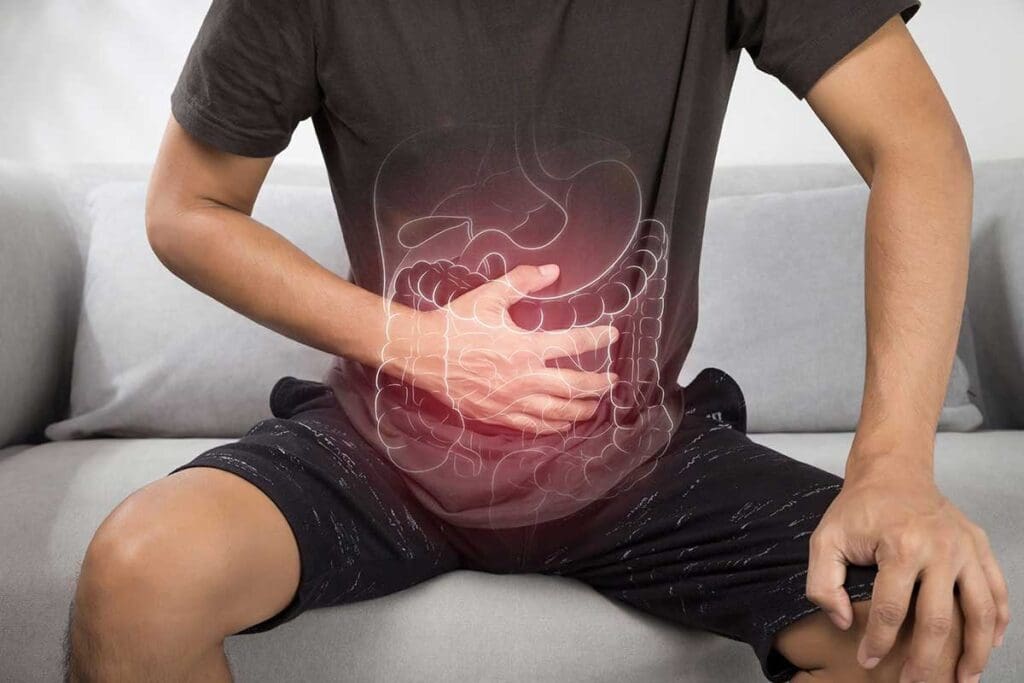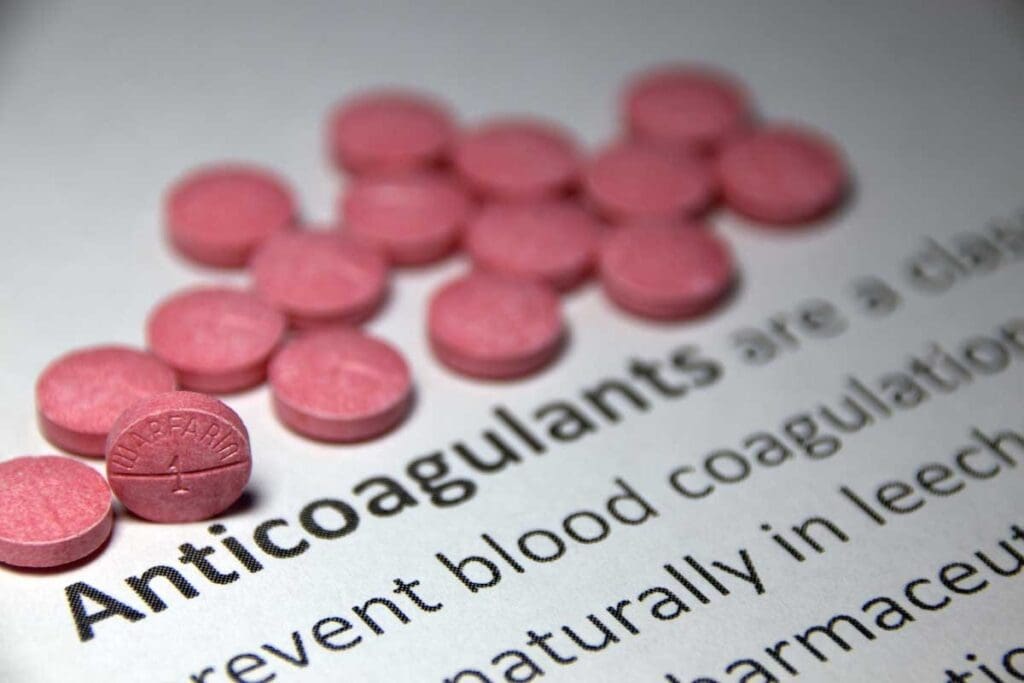Last Updated on November 17, 2025 by Ugurkan Demir
Getting anticoagulant shots might seem scary, but it’s doable with the right help. At Liv Hospital, we aim to give top-notch care and make sure you’re at the center of everything we do. We know how vital blood thinner shots are for stopping blood clots in people at risk.

Our guide makes it easy to understand how to give yourself a shot. It’s all about safety and doing it right. By following our steps, you’ll be able to take care of your health on your own. We’re here to make sure you’re safe, comfortable, and get the best results.
Blood thinner shots, or injectable anticoagulants, are key in stopping blood clots. They are vital for those at risk of blood clots or who already have them.
These shots prevent new blood clots and stop old ones from getting bigger. Low-molecular-weight heparin and fondaparinux are common types. They block certain blood-clotting factors, lowering the risk of clots.
Anticoagulants are often used for deep vein thrombosis (DVT), pulmonary embolism (PE), and atrial fibrillation. Here’s a quick look at these conditions and how anticoagulants help:
| Medical Condition | Description | Role of Anticoagulants |
| Deep Vein Thrombosis (DVT) | A blood clot in a deep vein, usually in the legs. | Prevent clot growth and return |
| Pulmonary Embolism (PE) | A blood clot is blocking an artery in the lungs. | Stop more clots and prevent embolism |
| Atrial Fibrillation | An irregular and often fast heart rhythm. | Lower stroke risk by stopping clots |

Knowing how blood thinner shots help manage these conditions is important. It helps patients stick to their treatment and get better health results.
The abdomen is often chosen for blood thinner shots for good reasons. The site of injection is key for the shot’s success and safety.
Subcutaneous shots in the abdomen have many perks. They absorb slowly, keeping medication levels steady. This method also hurts less than shots given in the muscle.
Slower absorption helps keep the anticoagulant effect steady. This is important for those on long-term treatment.

The stomach has a lot of subcutaneous fat. This makes it perfect for subcutaneous shots. The fat layer reduces the chance of hitting muscle or bone, lowering pain and risks.
Many studies back using the stomach for anticoagulant shots. The research shows it’s safe and works well, with few bad side effects.
| Benefits | Anatomical Advantages | Clinical Evidence |
| Slower absorption rates | Significant subcutaneous fat | Supported by numerous studies |
| Stable blood levels | Reduced risk of hitting muscle or bone | Low risk of adverse effects |
| Less painful compared to intramuscular injections | Ideal for subcutaneous injections | Proven safe and effective |
Self-administering blood thinner injections needs careful preparation and the right tools. To make sure the injection is safe and works well, you need all the right supplies ready.
The main things you need are the blood thinner medication and the injection tools. This includes:
It’s important to have a clean workspace to avoid infections. Clear a flat surface and make sure it’s well-lit. Use a disinfectant to clean the surface, making it ready for your injection.
Keep your supplies organized and within reach for a smoother injection process. Place your medication and injection equipment in a special area. Make sure your sharps disposal container is close by.
Getting ready for a blood thinner shot in your stomach is important. We’ll show you how to stay safe and do it right. This includes keeping clean, checking your meds, and picking the right spot.
Start by washing your hands. Use soap and warm water and rub them together to make suds. Make sure to clean all parts, like between your fingers and under your nails. Then, rinse well with water and dry with a clean towel.
Next, check your medication. Look at the label to make sure it’s right. If you’re not sure, ask your doctor about the dosage.
Choose a spot on your belly that’s at least 2 inches from your belly button. Avoid areas with scars, bruises, or skin irritation. Also, change where you inject to avoid damage.
To manage your condition with injectable anticoagulants, learning how to inject blood thinners is key. We’ll show you how to do it safely and effectively.
Start by cleaning the injection site on your abdomen with an alcohol swab. Make sure it’s dry to avoid infection. Pick a spot at least 2 inches from your belly button, away from veins or scars.
Hold the syringe like a pencil or a dart. This grip helps you control the needle.
Pinch the skin at the injection site to make a fold. This helps the needle go into the right tissue, not muscle.
Put the needle in at a 45 to 90-degree angle to the skin fold. This depends on the needle and your body. Release the skin and press the plunger to give the shot. Make sure the needle goes in the right depth.
By following these steps, you can give your blood thinner shot in the stomach with confidence. Always throw away the needle safely and watch the site for any bad reactions.
After getting a blood thinner injection, it’s important to take care of yourself. This helps avoid bad reactions and helps you heal faster. Here are some key steps to follow.
Press gently on the injection spot with a cotton ball or gauze for a few seconds. This helps stop bleeding and reduce bruising.
Put the used needle and syringe in a sharps container. Never throw them away in your regular trash. Use a portable sharps container in your bathroom or a special area.
Look at the injection spot for any signs of trouble, like more redness, swelling, or pain. Watch for any odd symptoms. If you see something that worries you, call your doctor right away.
| Post-Injection Care Steps | Purpose |
| Apply gentle pressure | Minimize bleeding and bruising |
| Dispose of sharps safely | Prevent injury and infection |
| Monitor the injection site | Identify possible problems early |
It’s important to know about side effects and complications when using blood thinner shots. We’ll help you understand normal reactions and when to worry. We’ll also talk about how to make the process less painful and when to get medical help.
Side effects like bruising, redness, or swelling at the injection site are common. These usually go away on their own. But if you have a lot of bleeding, severe pain, or think you’re having an allergic reaction, get help right away.
To lessen bruising, press the area gently for a few seconds after the shot. Try to use different spots on your abdomen for each shot. A cold compress can also help with swelling and pain.
If you have heavy bleeding, trouble breathing, or severe stomach pain, call for help fast. Also, watch for signs of infection like more redness, swelling, or pain at the shot site.
Keep a record of your shots and any side effects. This helps your doctor make the right changes to your treatment. Always share any new symptoms or concerns to stay safe and keep your treatment working well.
Managing anticoagulant therapy well means knowing how it works and sticking to the treatment plan. Learning how to give yourself blood thinner shots in the stomach is key. This ensures you get the right amount and avoid side effects.
We’ve covered the important steps for giving yourself blood thinner shots. This includes getting ready, injecting, and throwing away the needle. By following these steps and keeping up with doctor visits, you can get the best results from your treatment.
It’s important to keep up with your anticoagulant therapy to stay healthy and avoid blood clot problems. We suggest staying informed, following your treatment plan, and seeing a doctor if you notice any unusual symptoms.
Blood thinner shots, also known as anticoagulant injections, help prevent and treat blood clots. They are given to people at risk of deep vein thrombosis (DVT), pulmonary embolism, or stroke.
The stomach is chosen for blood thinner shots because it absorbs the medication slowly. It’s also fatty, making it easier to inject.
Before a blood thinner shot, wash your hands well. Check the medication and dosage. Choose a spot on your abdomen for the shot. Make sure the area is clean and free of debris or irritants.
Common side effects include bruising, redness, or swelling at the injection site. Serious side effects can be bleeding, allergic reactions, or low platelet count. If you have any concerns, see a doctor.
To lessen bruising and discomfort, gently press the injection site after the shot. You can also use a cold compress or elevate the area. If the issue doesn’t go away, talk to your healthcare provider.
You can inject blood thinner shots in other areas like the thigh or upper arm. But the stomach is usually preferred because of its fatty tissue and easy access. Always check with your healthcare provider for the best site.
Use a sharps container or a puncture-resistant container with a lid to dispose of used needles and syringes. Don’t throw them in regular trash or recycling. Check with your local authorities for sharps disposal guidelines.
If you miss a dose, call your healthcare provider. They might tell you to take the missed dose or skip it and stick to your regular schedule. Never double up on doses without talking to your healthcare provider.
To make injections less painful, use a new needle each time. Inject at room temperature. Avoid areas with scar tissue or irritation. You can also try different injection techniques or ask your healthcare provider for advice.
Solari, F. (2023). Low-Molecular-Weight Heparin (LMWH). In StatPearls. https://www.ncbi.nlm.nih.gov/books/NBK525957/
Subscribe to our e-newsletter to stay informed about the latest innovations in the world of health and exclusive offers!